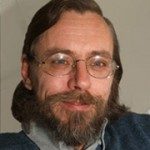Link to Pubmed [PMID] – 7739036
J. Mol. Biol. 1995 Apr;248(2):225-32
The crystal structure of Clostridium thermocellum endoglucanase CelD revealed an extended NH2-terminal segment (involving residues from the putative leader peptide) sticking out from the enzyme core to interact with a symmetry related molecule through an intermolecular salt bridge (Lys38-Asp201). Enzymatic digestion of CelD with various proteases emphasized the flexibility of the NH2-segment in solution. Proteolytic removal of Lys38 or the substitution of bridge-forming residues by site-directed mutagenesis promoted crystal packing arrangements that differ from that of wild type CelD. Crystals of wild-type CelD (a = 99.3 A c = 191.8 A) are trigonal, space group P3(1)21, with one molecule in the asymmetric unit (form A), whereas crystals of papain-treated CelD (a = 100.4 A, c = 248.7 A), of CelDK38M (a = 100.1 A, c = 248.4 A) and of papain-treated CelDD201A (a = 99.9 A, c = 250.0 A) are trigonal, space group P3(1)21, with two crystallographically independent molecules (form B), and crystals of chymotrypsin-treated CelD (a = 100.0 A, c = 254.3 A) and of CelDD201A (a = 99.8 A, c = 254.7 A) are hexagonal, space group P6(1)22, with one molecule in the asymmetric unit (form C). Only chymotrypsin-treated CelD (which preserves both Lys38 and Asp201) can grow in crystal form A upon macroseeding, indicating that formation of the intermolecular salt bridge is critical for stability of this crystal form. Flexible NH2- and COOH-terminal peptide extensions were found to influence crystal nucleation, but not crystal growth. The crystal structures of papain-treated CelD and chymotrypsin-treated CelD, determined at 3.5 A resolution by molecular replacement techniques, demonstrate that a small change in molecular orientation promoted by Lys38 account for the differences between crystal forms B and C.

